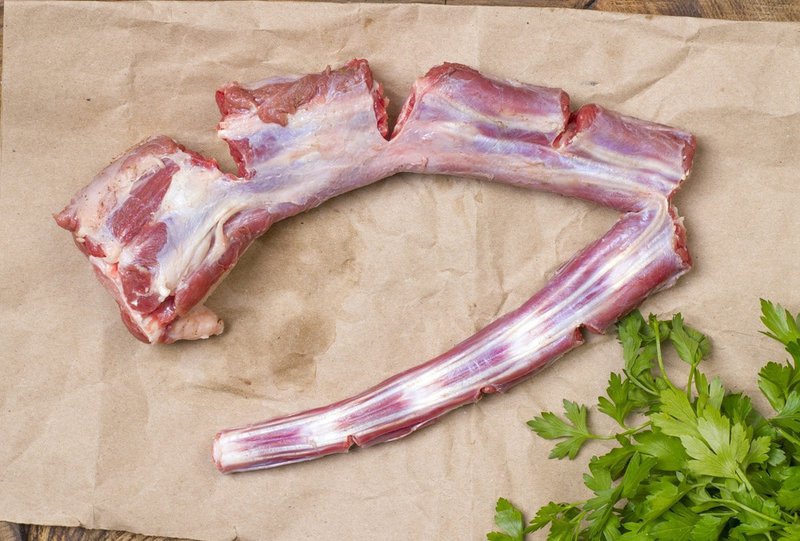With the ongoing trend of dog TikTok and Youtube videos, it’s not uncommon to stumble across a couple of videos where dog owners feed their pooches oxtail bones, with the dogs cracking and chewing the sumptuous bone treats as their charged tails wag back and forth and saliva-laden tongues dance endlessly across their faces.
So, with all the palpable delight seen on these dogs’ faces, would it be safe for you to replicate the same and feed your dog oxtail bones, whether cooked or raw?
Yes, dogs can eat oxtail bones. But, how safe this food is depends on certain factors like the size of the bone piece in comparison to your dog’s weight and crunching prowess. Also, some dangers associated with feeding either cooked or raw oxtail bones do exist, such as splintering and choking, that every dog parent should be aware of.
Hence, in this article, you’ll learn what dogs stand to gain from consuming oxtail bones, the potential dangers that could arise from oxtail consumption, the safer of two options—cooked or raw oxtail, things to consider when feeding oxtail bones, what to do if a dog gets a bone piece stuck in its throat, etc.
Is Raw Or Cooked Oxtail Bone Better For Dogs?
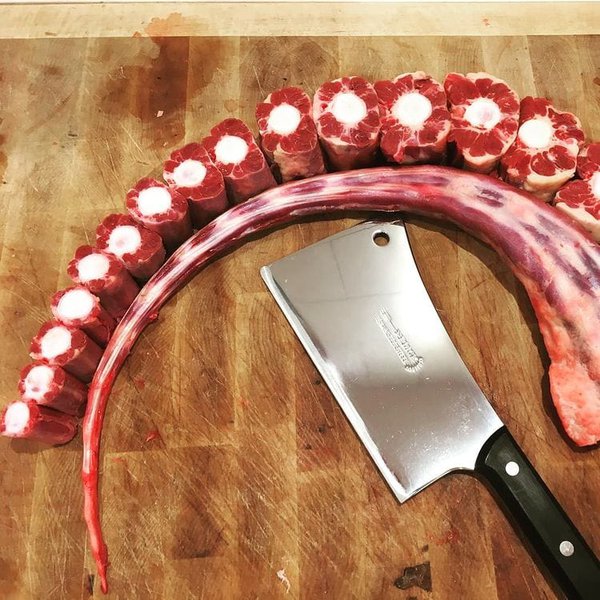
The question of feeding raw meat or bone to dogs is still fiercely contested between experts who reel out a dictionary of consequences attached to feeding raw meat and experienced, passionate dog lovers who swear that their dogs are all the better for consuming uncooked steak and bones.
For instance, on the one hand, medical experts say that cooking is highly recommended because pathogens in raw bones could lead to bacteria attacks on a dog’s digestive tract.
But, on the other hand, nutritionists claim that cooking bones cause them to become dry, ultimately increasing the possibility of splintering, damaging dogs’ internal organs. Also, keep in mind that the difficulty of chewing bones increases after cooking.
Another argument on the part of raw feeders is that uncooked oxtail contains all the nutrients and vitamins in their pure, unaltered state, which has significantly more powerful health benefits in dogs.
Conclusively, whether you choose to feed your dog raw or cooked oxtail depends on certain conditions like your dog’s size, dental strength, and preference for raw or cooked bones.
What Are The Benefits Of Giving A Dog Oxtail Bones?
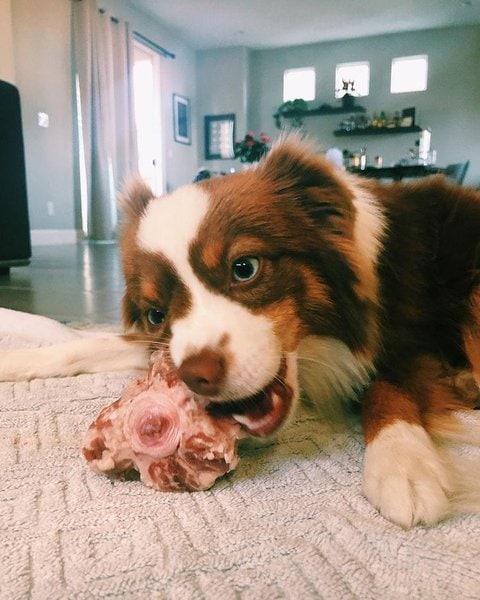
Dogs possess digestive tracts that have evolved over the years to thrive on meat and bone meals. Oxtails pack a ton of health benefits. Some of which are:
Physical And Mental Workout
Ideally, the standard oxtail bone should put your four-legged companion’s teeth to the test. Having to gnaw through such a thick substance is another viable way for a dog to release pent-up energy and focus on a task.
Interestingly, as your canine battles with the bone, its jaws, teeth, and salivary glands are engaged, causing a complete exertion of the muscles in the upper body.
In addition, gnawing on bones helps to stimulate the mental faculties of dogs, as all of a dog’s senses are alert to the task at hand.
So, if your furry buddy is becoming restless and you don’t have much time on your hands for a walk, tossing a piece of oxtail bone should do the magic.
Healthier And Cleaner Teeth
When a dog chews through bone pieces, a teeth-cleaning process actually takes place. Bits of bones rub against the enamel and serve as an abrasive, wiping plaque and other lingering substances off a dog’s teeth.
Of course, your dog’s gums aren’t left out of the exercise as they also get some bit of cleaning too. All in all, the act of eating oxtail bones cleanses your dog’s entire mouth, ridding bad breath and making face-licking and cuddling time a pleasurable experience.
Shinier And Thicker Coat
Contained within bones, especially the marrow, is a rich layer of fat that not only increases the supply of essential oils in your dog’s system but also serves as an alternate, readily usable source of energy.
The fat in oxtail bone marrow helps to boost the production of oil through the sebaceous gland, which in turn makes your pooch’s hair luscious and fuller.
Stronger Bones And Muscles
Among many other nutrients, oxtail bones contain calcium which is the principal element for building strong bones in dogs’ bodies. There’s also the heavy presence of potassium which prevents hypokalemia—a life-threatening illness that results from a shortage of potassium in a dog’s system.
Low-Obesity Risk
Frankly speaking, dogs fed with a raw, heavily concentrated protein diet like oxtail bones seldom battle with obesity. The regular consumption of proteins and minerals in oxtail bones also preclude the possibility of your furry companion taking a liking to sugary treats.
Is It OK To Give Dogs Cooked Oxtail Bones?
As with everything that has a positive side, allowing dogs to eat oxtails has its downsides. While not common, some dogs may exhibit the following symptoms after participating in an oxtail meal:
Choking Hazard
The number one reason why experts argue against the consumption of oxtail by dogs is due to the increased possibility of a choking hazard. Generally, oxtail bones are large in appearance and could be a big threat, especially to smaller dog breeds like the Chihuahua.
When dogs eat oxtail bones, the chances of swallowing bone pieces whole are likely. Unfortunately, bones that are too large for your canine pal to swallow could get stuck in its throat or could lead to intestinal blockages.
But then again, when large oxtail bone chunks are broken into smaller pieces to allow for easier swallowing, the act presents the possibility of splintering, which also endangers a dog’s existence. And that’s because smaller chopped bone pieces can break into jagged shrapnel that pierces the throat, or worse, the stomach of a dog.
Intestinal Blockage
Intestinal blockage occurs when a dog ingests objects too large for the digestive system to break down.
For example, some types of oxtail bones, depending on your doggie’s size, might be too large for digestion to take place.
Consequently, when it’s time for substances in the stomach to move into the intestines, where absorption into the bloodstream takes place, the large, foreign undigested bone piece clogs the intestinal walls. It also prevents the passage of other digested food substances.
Such an occurrence could be life-threatening as it stretches the intestinal walls, sometimes causing internal injuries. Note that the repercussion of intestinal blockage in the absence of veterinary care is death within a few days.
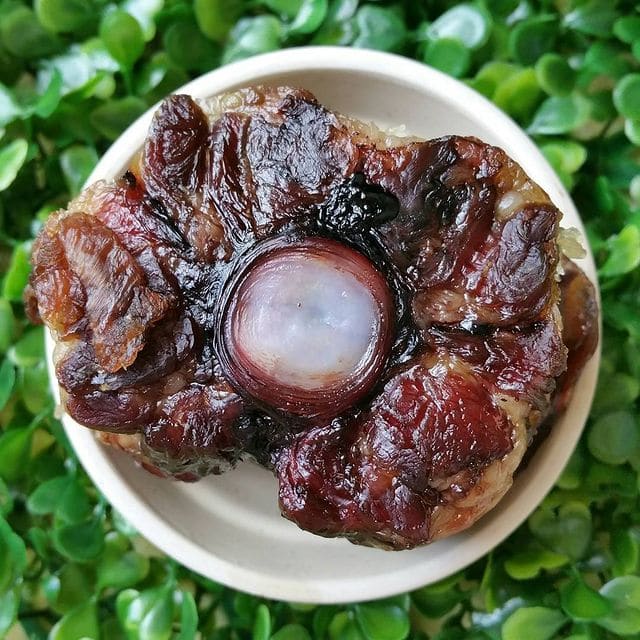
Tooth Breakage And Gum Damage
Dogs love a chewing contest because there’s an innate drive to bite and gnaw things, especially delicious lip-smacking treats like oxtail bones. Generally, the problem with bones and dogs is that many dog owners have trouble determining and matching the appropriate bone size with their dog’s weight.
In other words, feeding oxtail bones to a small-bodied dog with fragile teeth can cause tooth damage which could extend to the jaw and cause some serious discomfort. Other times, there could be some grazing and puncturing of the gum, leading to bleeding during the chewing process.
Bacterial Infection
The heat from cooking kills pathogens that thrive on uncooked food items like oxtails. And while the debate is far from settled, many dog parents still feed their dogs with raw oxtail, which could present infections like Salmonella poisoning.
Salmonella poisoning, in particular, while rare in dogs, is a dangerous infection that could crop up from the consumption of raw oxtail and cripple a dog’s immune system within days.
Even worse is the fact that Salmonella can spread from animals to humans, endangering the health of adults, and kids especially, that come in contact with a carrier dog. Signs of Salmonella infection in dogs to watch out for are fever, uncontrolled stooling, and vomiting.
What Should You Do If My Dog Chokes On A Piece Of Oxtail Bone?
Dogs were meant to chew and eat raw bone pieces. However, sometimes, things could go wrong, and your dear Fido could choke from eating oxtails.
In the event of a choking hazard, you’ll need to restrain your dog and calm it down because your pooch will automatically go into panic mode as the choking condition aggravates.
Once restrained, open your dog’s mouth and see if you can try to get the bone piece out by gently pulling on it. If during the act of pulling out the stuck bone, your dog winces from pain, you might want to stop and consult the vet right away.
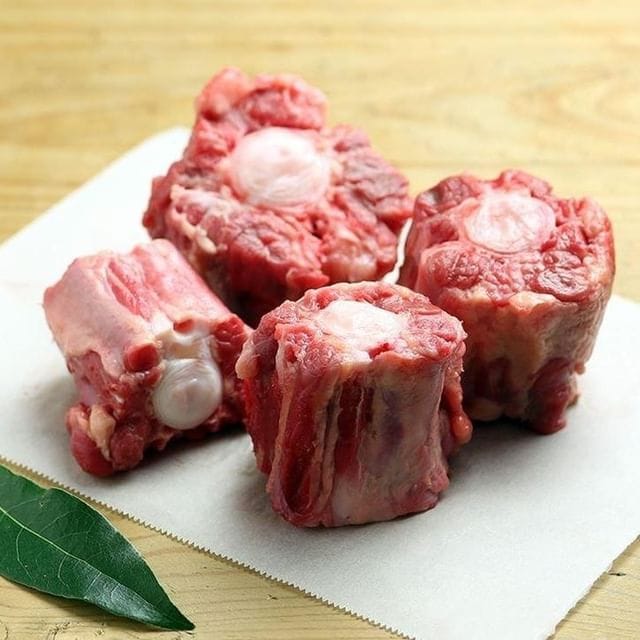
Are There Other Ways Of Feeding Oxtail Bones To Dogs?
Yes, if you’re worried about the potential harm that could arise from feeding raw or cooked oxtail bones to dogs, you could simply make an oxtail bone broth.
Oxtail bone broths are easy to make at home. What’s more, making such a broth removes all the potential dangers bones may pose while still being able to extract every possible nutrient contained within the bone pieces.
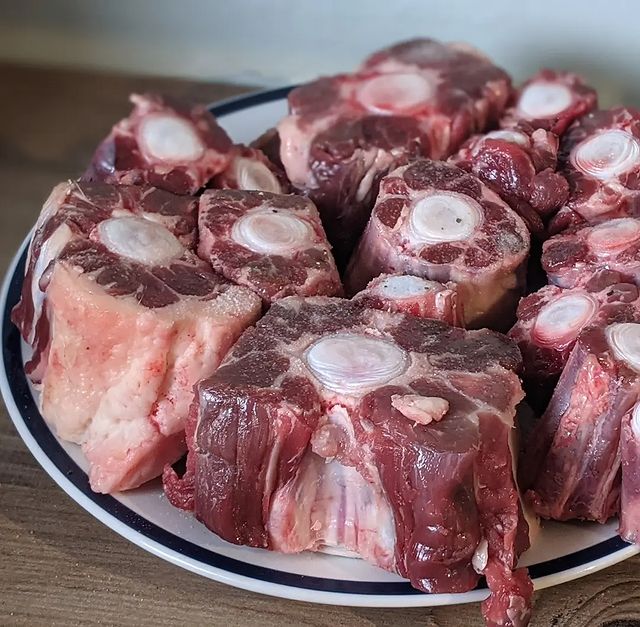
How Do I Prepare Oxtail Bone Broth For My Dog?
Preparing oxtail bone broth at home is a simple procedure that requires no special skills or equipment.
First, put the fresh oxtail bones into a pot, and add some water to the point where the bones disappear beneath the water surface.
Second, depending on the number of bones you have, add a few spoons of apple cider vinegar—this is the unique ingredient that helps the rapid dissolution and the extraction of nutrients from bone fragments in the pot.
Third, heat the pot for 24 hours. Depending on the heat supplied and the softness of the bones, you might want to leave the broth boiling for another 24 hours.
Lastly, take out the cooked broth, squeeze out the soft bones, add vegetables like cauliflower and leave to cool before serving your dear Fido.
What Are The Factors To Consider Before Feeding My Dog Oxtail Bones?
Given the many arguments for and against the consumption of oxtail bones, it’s only logical that a caring dog parent consciously learns everything about feeding oxtail to their canine pal. Below are some of the paramount considerations to keep in mind:
Feed The Right Bone Size
Generally, when it comes to feeding dogs, providing the right bone size that matches your furry buddy’s weight is critical and can make all the difference between a dog enjoying a sumptuous treat or battling a choking hazard.
The foremost principle is to avoid feeding dogs bones that can be swallowed whole. The key here is to avoid a choking hazard which normally occurs when your dear Fido swallows bones whole, instead of chewing them into smaller pieces such that the bones are deemed small enough to freely pass through its throat.
What you want to do is get a piece of oxtail bone that’s not too large that it damages your canine pal’s teeth yet not too small that your dog’s tempted to swallow it in a single gulp, bringing us to the next point.
Know Whether Your Dog Is A Gulper Or A Chewer
When feeding oxtail bones, you’ll need to know if your dog gulps or chews its meals because different dogs have different patterns of eating their meals.
The reason for finding your canine’s eating pattern will help you determine just how large each oxtail bone piece should be and how much supervision is needed when feeding.
For example, if you own a dog that chews while eating, your concerns about a choking hazard wouldn’t be much.
However, let’s suppose you have a gulper on your hands. In that case, you might want to reconsider feeding oxtail bones because such a dog loves to swallow food whole and would do the same with bone pieces, increasing the possibility of choking or intestinal blockages.
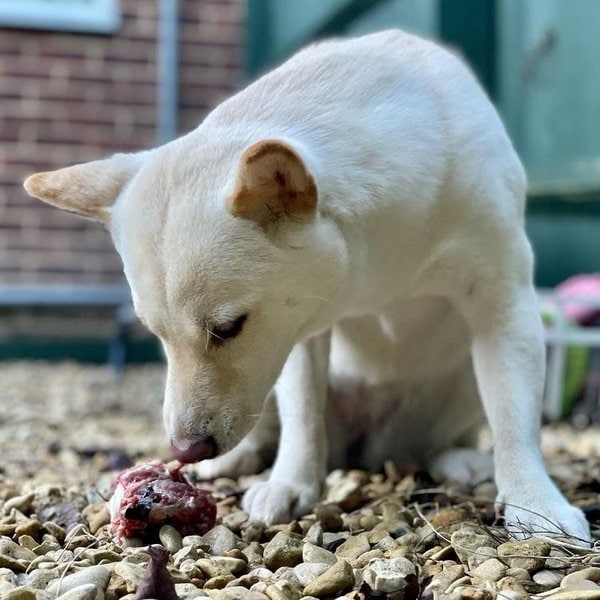
Feed Slowly And Supervise Closely For First-Time Meals
A general rule of thumb for introducing the first-time meal to your dog, be it oxtail bones or any other edibles, is to feed slowly and monitor closely.
The essence of this is to familiarize your furry buddy with the taste and feel of oxtail bones, especially if you haven’t been feeding bones from a tender age. In addition, you want to ensure that during the first introduction, you train your pooch to bite down and chew on bones before swallowing.
After feeding, keep an eye on your canine, ensuring there aren’t any strange symptoms exhibited as such could be signs of choking or gastrointestinal obstruction.
Feed Only Store-Bought Oxtails
Several types of oxtails abound, each from different cattle. However, some kinds of oxtail bones sold in stores are particularly cut and prepared for dogs. With store-bought oxtails, there’s a reduced likelihood of choking and dental damage since the bone has been cut in a way that prevents splintering when chewed.
Nevertheless, despite feeding specially cut oxtail bones to dogs, keep in mind that your pooch may still struggle with eating oxtail bone pieces if you’ve never introduced such a treat before.

